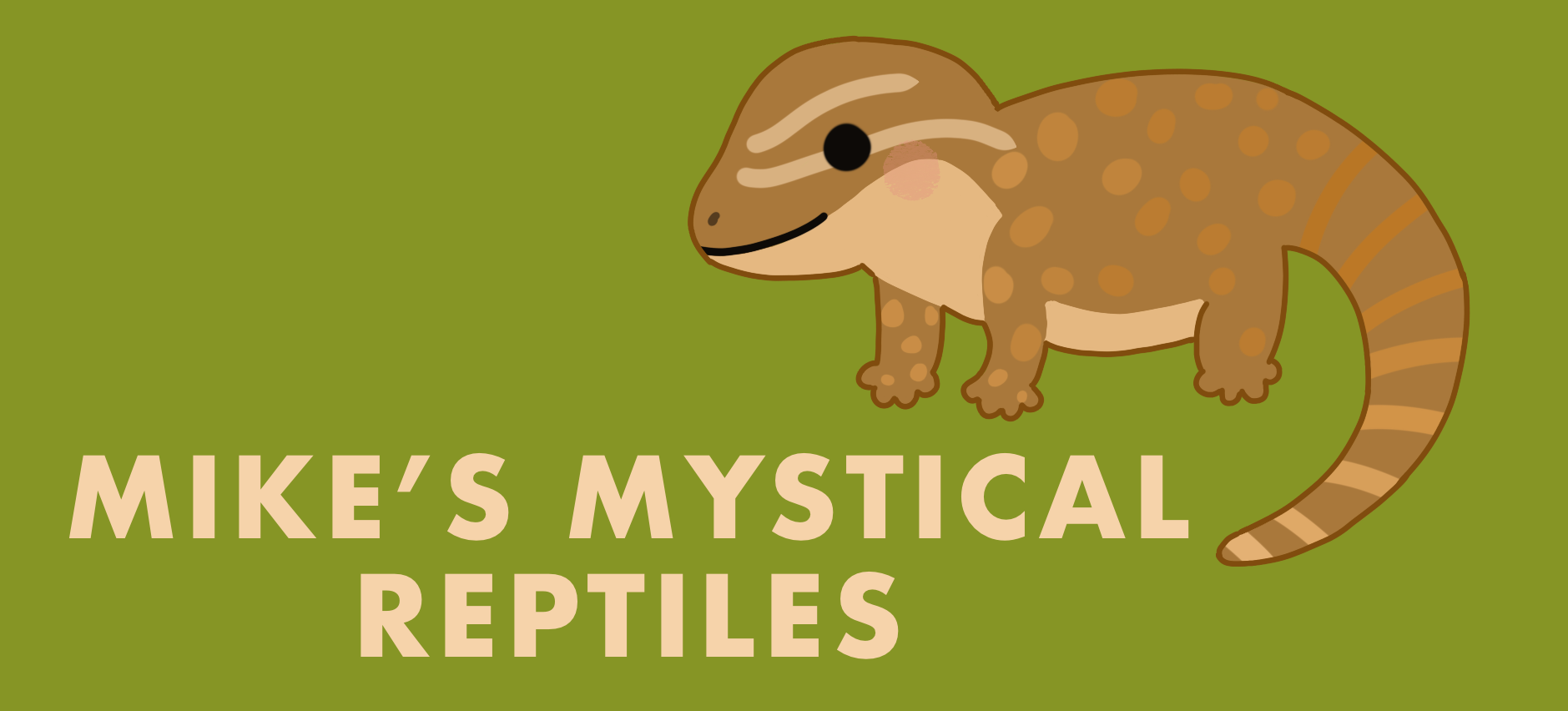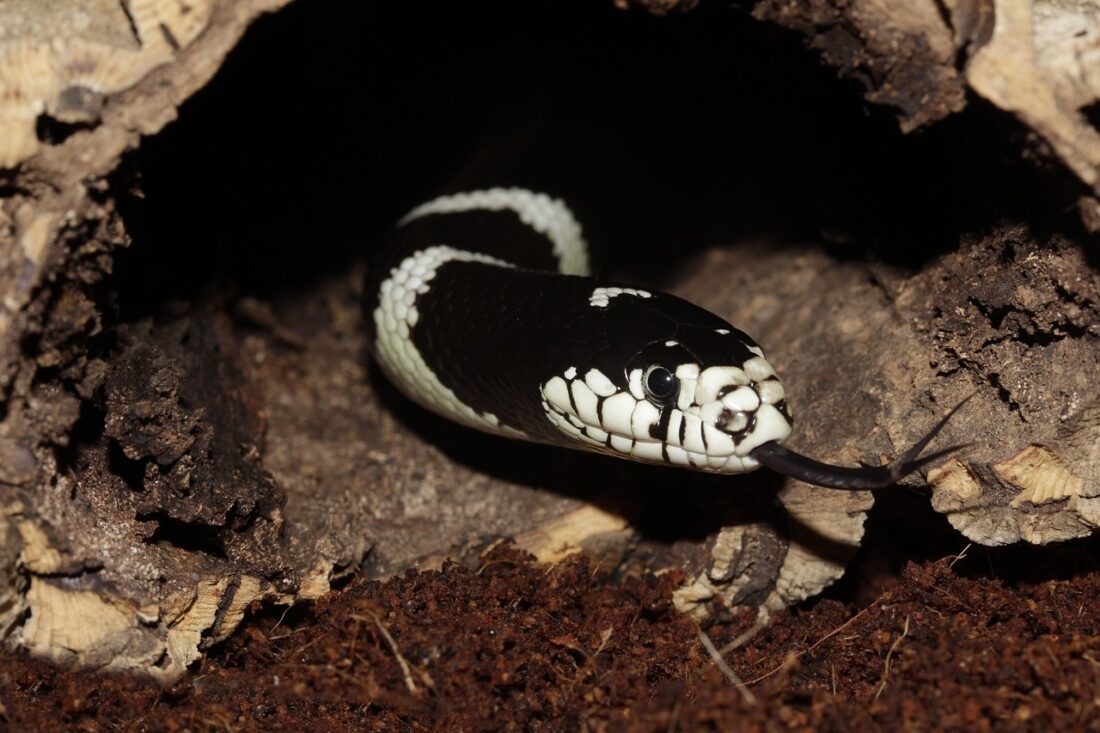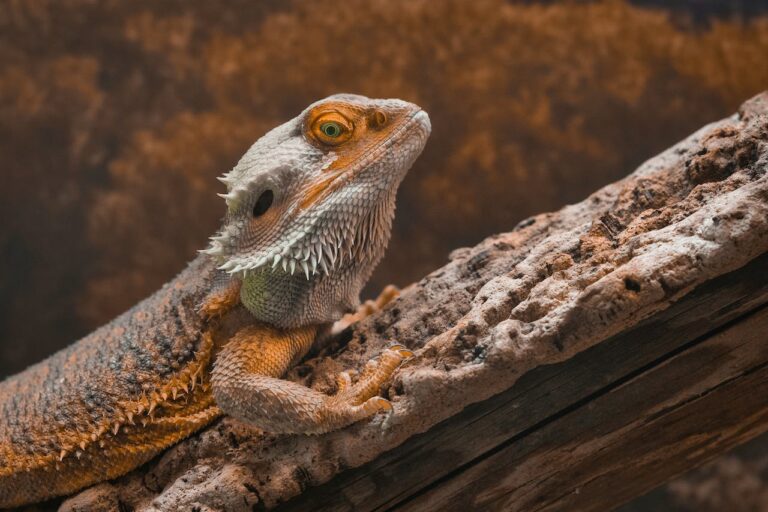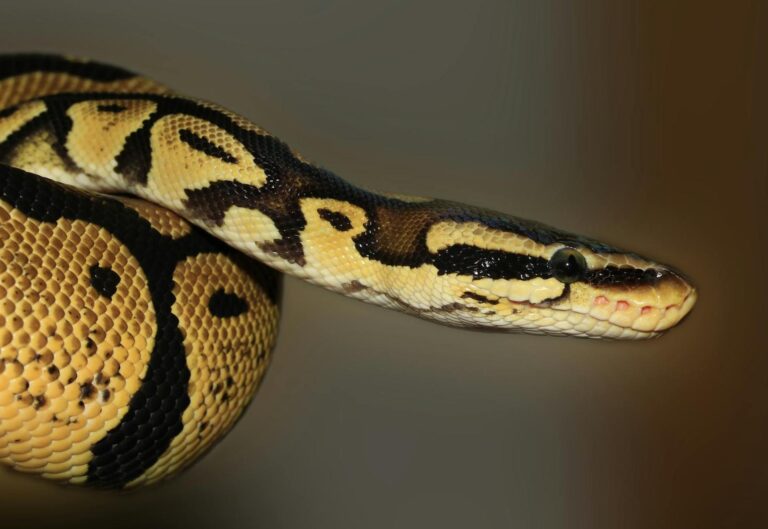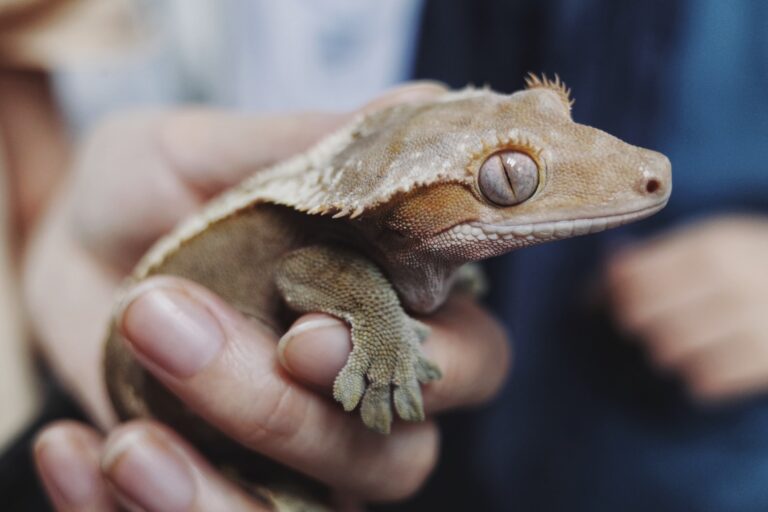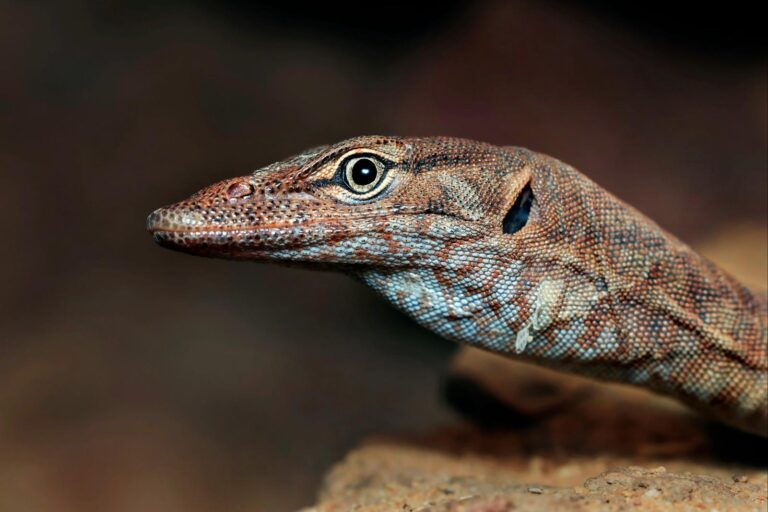11 Fun Activities To Do With Your Reptile!

Introduction
Are you looking to spend more time with your pet reptile or create a stronger bond with him/her? Or were you just wondering what other forms of enrichment you can provide?
Well, you’ve come to the right place! In this post, I’ll be discussing 11 fun activities you can do with and for your reptile.
From simple outdoor hangs to DIY toys, we’re diving into easy, fun ways to make your reptile’s life awesome!
These activities aren’t just enjoyable; they bring tangible health benefits. Outdoor exploration, for instance, promotes physical exercise and mental stimulation, while incorporating home-grown veggies diversifies their diet, contributing to overall nutrition.
Let’s get started!
1. Outdoor Exploration

Out of many different reptile activities, this is by far one of my favorite things to do, as it is not only fun but has many health benefits!
If the temperature and weather outside are suitable, take your reptiles outside and allow them to bask in the sun and explore! The natural sunlight provides a rich source of UV rays that are incomparable to the UV bulbs we keep in our reptiles’ enclosure. Doing this periodically will allow your pet to synthesize vitamin D3 more effectively and improve bone health.
Outdoor exploration also allows for a change of scenery for your pet and provides physical and mental stimulation.
Consider creating a dedicated outdoor enclosure or secure space for exploration. Feel free to add elements like sticks, stones, or branches to create a more naturalistic environment.
If wild edible plants grow in your backyard, I encourage you to let your reptile eat them! (just make sure that the plant is edible and nutritious for your pet first. Also, ensure that no pesticides or fungicides have been sprayed on the plants) Dandelions are an excellent choice to feed to your bearded dragons or tortoises; they love it!
For larger lizards, you might even consider taking them on short walks in a safe environment. I’ve seen countless cute videos of lizards like bearded dragons or even water monitors being taken for walks. They seem to like it!
2. Relaxation Time

There’s nothing better than sitting back on your couch, playing your favorite TV show, and enjoying a nice scoop of ice cream. (at least that’s what my form of relaxation looks like)
What’s to say we can’t create that kind of environment for our reptiles?
A relaxation spot should be separate from the main enclosure, dedicated to providing your pet with a space for relaxation. Ensure that there is a correctly placed basking spot for optimal temperature regulation. Allowing your reptile a space to relax is not just about luxury, but helps your pet reduce stress levels.
Creating a calming environment for your reptile can be achieved by adding natural elements such as plants, rocks, and logs to simulate their natural habitat. Consider using dimmer lighting or providing a shaded area for them to retreat to when they need a break from the heat.
Additionally, providing hiding spots or caves can serve as a safe space for your reptile to retreat when they feel threatened or anxious. Remember to regularly clean and disinfect the relaxation area to maintain a healthy and hygienic environment for your pet.
3. Active and Passive Handling

Some reptile keepers rarely handle their reptiles, enjoying their beauty from afar and taking delight in their care requirements. However, if you want to level up your relationship with your pets, I highly recommend handling them (if applicable).
Note: This only applies to reptiles where handling is feasible, and is safe for both the reptile and keeper. (ex. never free handle a venomous snake; it’s simply not worth it)
I choose to define handling into two sections: active, and passive.
Active handling is actively engaging with the reptile, focusing your entire attention on the reptile at all times. This is more suitable for more active reptiles and requires more attention during handling.
Passive handling is when you allow your reptile to sit with you while you do other activities, such as using your laptop or watching TV. A great example of a reptile for passive handling is a bearded dragon. They tend to sit still for large amounts of time and seem perfectly content sitting on your shoulder while you do your work.
If you’re considering active handling, it’s crucial to first research the specific needs and temperament of your reptile.
Some reptiles may be more comfortable with active handling, while others may become stressed or agitated. It’s important to handle them in a calm and controlled manner to ensure their safety and well-being.
On the other hand, passive handling can be a great way to bond with your reptile while going about your daily activities. It allows them to observe and be a part of your world while feeling secure and relaxed. Remember to always prioritize the comfort and safety of your reptile when deciding on the type of handling that suits them best.
4. Reptile Playdates

The idea of playdates extends beyond the human realm and proves to be a great enriching experience for our reptiles as well! When planning reptile “playdates”, it is extremely important to ensure that both reptiles are compatible.
I would start by introducing reptiles of similar temperament and species, ensuring that the interaction is positive and stress-free for all reptiles involved.
From my experience, I have seen that bearded dragons and tortoises seem to have a fun time interacting with each other!
During reptile playdates, it is crucial to supervise the interaction closely to prevent any aggressive behavior or harm. Providing a spacious and neutral environment, such as a larger enclosure or a designated play area, can help facilitate a safe and enjoyable playdate.
It is also important to consider the individual needs and preferences of each reptile, ensuring they have access to hiding spots, basking areas, and appropriate temperature and humidity levels.
Remember, the purpose of these playdates is to stimulate and provide socialization opportunities for your reptiles, promoting their overall well-being.
5. Change Up the Enclosure Layout

Attribution (CC BY 2.0)
This activity not only aids in mental stimulation for your pet but also gives our eyes a nice change up of the scenery. For vibrant, arboreal reptiles, a rearranging of the enclosure layout could dramatically change the living space of the room it’s in!
Introduce new hiding spots, climbing structures, or rearrangements to keep your reptile’s mind sharp and active. Smarter reptiles may show more engagement with the living environment and appreciate the unpredictability of their natural habitats.
Consider the natural behaviors and preferences of your specific reptile species when altering the enclosure. Incorporate a diverse array of environmental features to encourage exploration and curiosity.
A well-thought-out enclosure layout contributes significantly to the overall well-being of your reptile, transforming its living space into a dynamic landscape that mirrors the complexity of the wild.
6. Training and Taming Sessions

Another way to bond with your pet reptile is to spend time training and taming them! This is especially useful if your reptile is skittish or has a bad temperament.
These sessions help foster a bond based on trust and mutual understanding. Utilizing treats and gentle interactions, you can create positive associations with handling sessions, transforming your reptile into a more docile pet that tolerates handling more.
Note: While certain reptiles can tolerate handling more than others, I still would not recommend handling reptiles as often as you would with interacting with a dog. Reptiles are still reptiles and probably will never love you to the extent that a dog would. (No hate against reptiles though; I still love them!! I just wanted to point that out)
When it comes to building trust with your reptiles, consistency is key. A reptile that has not been handled for 6 months is much more likely to be aggressive compared to one that is handled every few days.
It is also important to start small. Consider just spending some time near your reptile’s enclosure in the beginning before moving on to handling sessions. When your reptile becomes more accustomed to the sessions and you as its keeper, you can gradually increase the duration and incorporate new experiences for both you and your pet.
As for training, there are many types of training but a popular one is called target training. This form of training is usually catered to larger monitor lizards, to improve safety for the keeper while feeding, but can be applied to most reptiles.
7. DIY Interactive Reptile Toys

Crafting interactive toys for your reptiles introduces a new layer of personalization to their environment! It allows for more physical and mental engagement.
By creating DIY interactive reptile toys, you can stimulate your pet’s natural instincts and provide them with opportunities for physical exercise and mental stimulation.
One simple idea is to make a foraging toy by placing food inside a hollowed-out log or a small box with holes. This will encourage your reptile to explore, search for food, and engage in a rewarding activity.
Another option is to create a climbing structure using branches or PVC pipes, providing your reptile with a stimulating environment to explore and exercise their muscles.
You can also make a puzzle toy by placing treats inside a secure container with small openings, challenging your reptile’s problem-solving skills as they try to retrieve the treats. A creative idea could be to use a Kong dog chew toy and hide the treats or food inside.
Lastly, consider creating a sensory toy by attaching different textures, such as fabric or feathers, to a sturdy object, allowing your reptile to experience different sensations while playing.
Remember to always prioritize the safety of your reptile when designing and implementing these DIY toys.
8. Swimming Sessions

I got this idea when I was scrolling Instagram reels and came across a bearded dragon swimming in a kiddie pool! Until then, I had no idea they could swim! 😀
For reptiles that enjoy swimming, providing a supervised swimming session can provide a unique and enriching experience for both you and your reptile. Heck, you can even swim together! (keep an eye on your reptile at all times and make sure there is a ramp for them to climb out if needs be)
Swimming not only provides your reptile with fun exercise, but helps with the shedding process, provides hydration, and supports muscle development.
I would be cautious if you’re thinking about letting your reptile swim in an outdoor chlorinated pool. While it won’t kill them, it isn’t the best for their health. (if your pool uses salt as the cleaning agent, feel free to let your reptiles swim in it!… under your supervision)
Don’t have a pool? consider using your bathtub as a mini pool. Here, you can control the temperature and water level, making it easier for you to ensure that your reptile stays safe while swimming.
9. Teach Simple Tricks

odonata98 is licensed under CC BY-NC-ND 2.0 DEED
Teaching simple tricks is especially great if you have a reptile species known to be more intelligent. Most monitor lizards tend to be much more intelligent than the average lizard. Other intelligent lizards include but are not limited to, emerald tree skinks, hognose snakes, and iguanas.
I would start with simple commands and gradually progress to more complex tricks based on your reptile’s abilities.
If you own a monitor lizard or large lizard (i.e. iguana or tegu), consider teaching them to come when called! It’s so cool being able to call your lizards by name and have them come to you.
The joy of successfully teaching a trick not only showcases their ability to learn but also deepens your communication with your pet. It is an engaging activity that contributes to your reptile’s mental well-being.
10. Grow Your Own Food

If you have any plant-loving reptiles, such as tortoises, bearded dragons, or iguanas, this one is for you!
This idea was inspired by Adam from his YouTube channel, “Wickens Wicked Reptiles“.
Taking a hands-on approach to your reptile’s diet by growing some of their favorite foods goes beyond the distribution of nutrition. Consider growing different types of greens and fruits to provide fresh and nutritious treats, creating a wholesome and diversified diet. It’s fun for both your reptiles and yourself!
You could also set up a dedicated space for growing reptile-friendly plants and let your reptile roam around in that area now and then.
Try growing these vegetables:
- Collard Greens
- Mustard Greens
- Turnip Greens
- Kale
- Arugula
- Bell Peppers
- Butternut Squash
- Strawberries
- Watermelon/melon
- Acorn Squash
- Zucchini
- Carrots
- Sweet Potatoes
- Cilantro
- Parsley
- Bok Choy
- Berries
On the topic of nutritious foods to feed your reptiles, consider supplementing with bee pollen! It is extremely nutritious and can improve the overall well-being and health of your reptile! I wrote a comprehensive article about bee pollen for reptiles here!
11. Create a Sensory Garden

This activity pairs very well with the previous activity! The concept of a sensory garden introduces a multi-dimensional experience for your reptile and helps stimulate their senses.
Set aside a spot in your garden to dedicate to the garden. The space should be free of harmful chemicals such as pesticides or fungicides.
Select plants with different textures or scents to create a diverse sensory experience. The garden should be intellectually stimulating, and act as a place for your reptile to interact with the environment on a sensory level.
In addition, the garden also serves as a place for your reptile to consume food. The edible and nutritious plants placed in the garden give your reptile the nutrition it needs to be healthy. Natural sunlight in the garden also helps your reptile synthesize more vitamin D3 and create stronger bones.
Conclusion
Here are the key takeaways from each activity:
- Outdoor Exploration: Embrace natural sunlight and exploration to boost your reptile’s physical and mental well-being.
- Relaxation Time: Provide a dedicated and cozy space to contribute to stress regulation and ensure your reptile’s contentment.
- Active and Passive Handling: Balance active engagement and allow passive interactions to build trust and foster a positive relationship between you and your reptile.
- Reptile Playdates: Supervise playdates with compatible reptile companions to mimic natural social behaviors, enriching your pet’s social experiences and creating bonding moments for all of you.
- Change Up the Enclosure Layout: Regularly change the enclosure layout to prevent dullness, encourage exploration, and contribute to the overall well-being of your pet.
- Training and Taming Sessions: Gradually build trust through handling and positive interactions to establish a calm and responsive reptile.
- DIY Interactive Reptile Toys (Including Feeding Toys): Personalize toys, especially feeding ones, to promote cognitive engagement.
- Swimming Sessions: Supervise swimming sessions to provide a unique and enriching experience, supporting physical health and offering a refreshing change to the routine.
- Teach Simple Tricks: Use positive reinforcement and target training to create interactive opportunities, showcasing your reptile’s intelligence.
- Grow Your Own Food: Cultivate reptile-friendly plants to provide a diversified and nutritious diet for both you and your reptile.
- Create a Sensory Garden: Develop a sensory garden with diverse textures and scents to enhance the living environment, stimulating your reptile’s senses and natural behaviors.
Well, that’s it for this one! I hope you learned something new and will consider engaging with your reptiles with one or more of the activities discussed. What bonding activity was your favorite? Let me know in the comments below 🙂 I’ll catch you in the next one!
